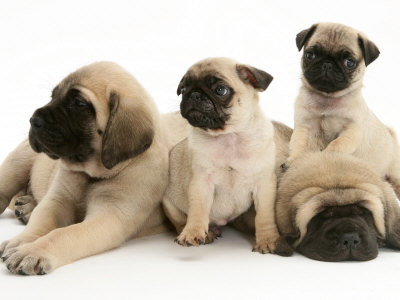 If you follow the steps outlined below you should have your puppy leash trained within a couple of weeks. One of the first things you need to teach your young puppy is how to behave on a leash.
If you follow the steps outlined below you should have your puppy leash trained within a couple of weeks. One of the first things you need to teach your young puppy is how to behave on a leash.
Don't just expect your puppy to know this stuff! Your goal is to clearly communicate to your dog, what is acceptable behavior on the leash, and what is not. After training a puppy to walk on a leash they are much safer and more manageable, plus it means walkies is an experience you can both look forward to and enjoy.
If it takes you and your dog a little longer, don't panic, it will be worth it in the end.It is a crucial skill to master for both you and your dog's future.The fact that you are reading this article Training a Puppy to Walk on a Leash probably means that you have a young puppy who needs to be leash trained.
Please be aware that everybody who takes your puppy for an on leash walk must convey a consistent message or set of rules to your dog.This is a great position to be in, as it is much easier to train a puppy the right way to walk on a leash, rather than trying to re-train an older dog.
Please be aware that everybody who takes your puppy for an on leash walk must convey a consistent message or set of rules to your dog.This is a great position to be in, as it is much easier to train a puppy the right way to walk on a leash, rather than trying to re-train an older dog.
Step 1
This first step can begin as soon as your puppy arrives at his new home.
All it involves is getting your young pup familiar with and comfortable wearing a collar. Place it on your puppy when you feed him or as you are playing, this provides a bit of a distraction from the collar.
He'll probably roll around trying to dislodge it, or try his best to scratch it off. When he is doing this it is important that you don't take it off him.
Wait till he has settled down and forgotten about it before you take it off. A simple light weight leather collar is ideal for this task.
Wait till he has settled down and forgotten about it before you take it off. A simple light weight leather collar is ideal for this task.
Step 2
Any light weight, thin leash is fine for this step.
You can buy your puppy a fancy leather leash after he is properly leash trained if you choose.He'll forget about it after a while.Once your puppy is happy wearing his new collar, it is time to introduce the leash.Same thing again here, you just want to get him comfortable with the leash, and to show him the leash is not to be feared.All you need to do is clip the leash onto his collar, let him check it out and drag it around the house (always under your supervision).
You can buy your puppy a fancy leather leash after he is properly leash trained if you choose.He'll forget about it after a while.Once your puppy is happy wearing his new collar, it is time to introduce the leash.Same thing again here, you just want to get him comfortable with the leash, and to show him the leash is not to be feared.All you need to do is clip the leash onto his collar, let him check it out and drag it around the house (always under your supervision).
Step 3
Now that your puppy is comfortable in his collar and with the leash, it is time to pick up the other end of the leash. All it takes to achieve this is to follow the above steps, then apply some patience and persistence. Don't yank him back over to you with the leash, just call him back over to you and praise him when he comes. Then set off walking again with your puppy by your side. The result is a nice loose leash hanging down between you and your dog. At this early stage you will probably find that your puppy loves to follow you around everywhere - use this to your advantage. If he wants to continue walking, it has to be by your side on a loose leash.
To start with just walk around the house with the leash in hand, and your puppy trotting along side you.When he is walking along on a loose leash give him plenty of praise, petting and even some treats. Make these first leash training sessions short, sharp and fun. Your puppy has to learn that when he pulls on the leash, he gets nowhere.
Never ever keep walking when your puppy is pulling on the leash, this only rewards his behavior and reinforces the habit. Don't yank him forward towards you, just call him over and reward him when he arrives. The same rule applies if your puppy sits down when you are walking. When he strains on the leash, stop immediately. This method of training a puppy to walk on a leash is suited to very young puppies, it requires no pulling from you or your dog.














